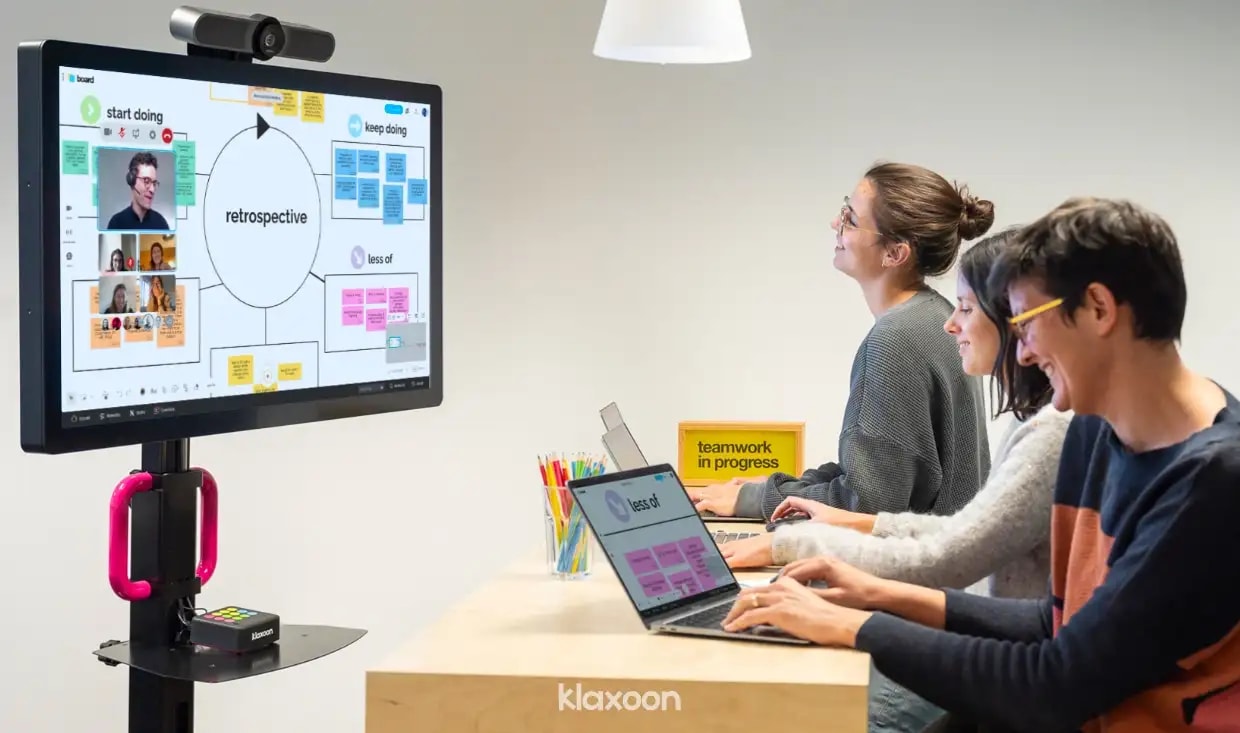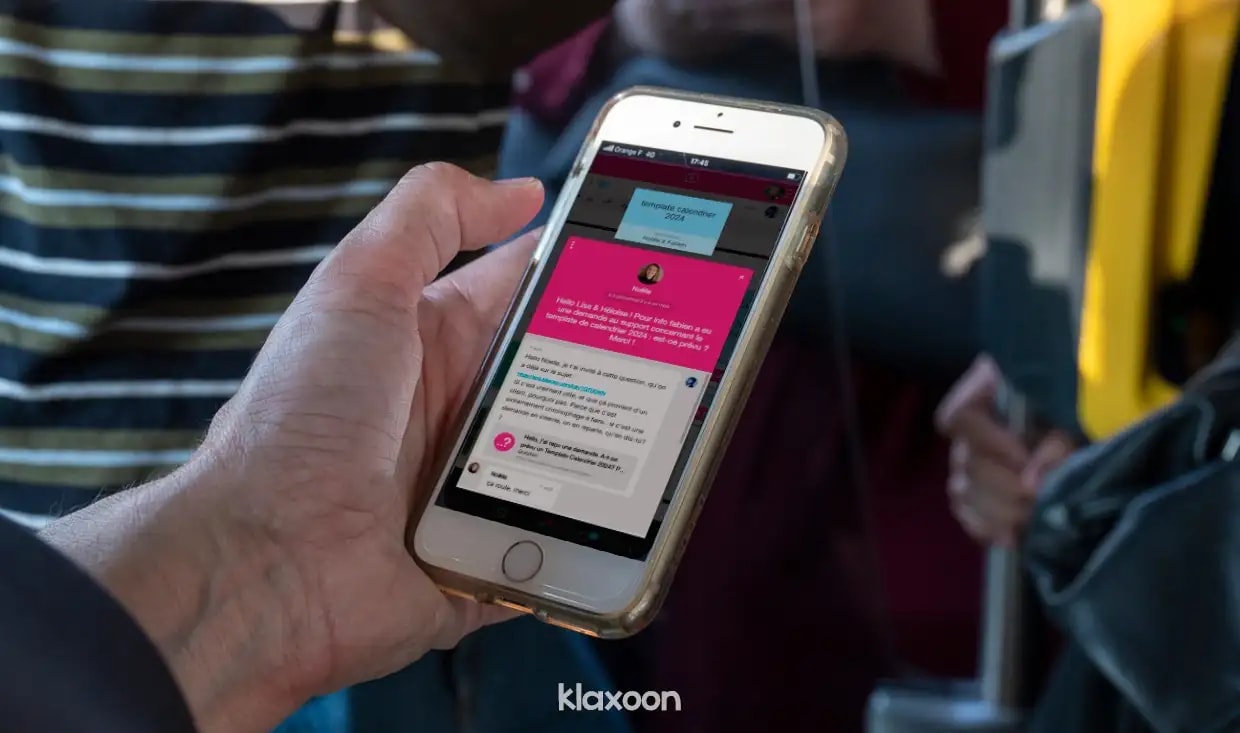Asynchronous work: why answering that email later will boost your team's productivity
Published on February 14, 2025
Asynchronous work: why answering that email later will boost your team's productivity
Our century is characterized by technological advances and changing work models, laying the groundwork for the concept of asynchronous working as an innovative approach to reshape the way individuals and teams collaborate. Originally, asynchronous working refers to a mode of operation in which employees are not required to interact in real time. Instead, companies offer their employees the opportunity to engage in tasks and projects, adapting their progress to their own pace, while respecting the priorities and framework set up in advance.
This break with traditional synchronous working practices offers a myriad of benefits that are finding favor with companies in all sectors. By relieving the pressure inherent in a culture of reactivity and immediate response, asynchronous working creates an environment where productivity, decision-making, inclusion and innovation converge harmoniously to foster a more effective and engaging organizational ecosystem.
In this article, we delve into the intricacies of asynchronous working, showing how its principles can push traditional boundaries and propel companies towards greater resilience, while enhancing its innovation and productivity capabilities, ultimately proving to be an undeniable competitive advantage.
Our relationship with the world of work is constantly evolving.
Each generation approaches it with its own set of expectations, sometimes of exogenous origin, and gradually imposes new methods that will then become the norm for the generations that follow.
The traditional model of work is transformed by new employee profiles with different expectations, and employers seeking commitment, efficiency, and productivity.
Over the decades, we have witnessed the evolution of the workstation, the open space, the extension of parental leave, the irruption of technology into many professions, hybrid work, and today, asynchronous work.
What exactly is asynchronous work?
Once the prerogative of large companies with teams scattered across the globe, asynchronous working is on the rise, thanks to new working methods and the quest for greater efficiency in order to maintain a balance between private and professional life, while at the same time meeting objectives.
Today, it's clear that not all brainstorming has to take place in a group, within the confines of a meeting room. It's perfectly possible - and indeed highly effective - to allow employees to work at their own pace, while ensuring that they remain creative and meet deadlines.
These are the foundations of asynchronous work.


A highly participative meeting mixing remote and in office work.
Yes, we're saying that allowing employees to manage their priorities more flexibly, ceasing to demand an up-to-the-minute response, or pressing pause to give people time for reflection and creativity, can all be excellent solutions for creating a culture of engagement and productivity.
A recent study showed that 91% of employees consider that flexible asynchronous working contributes to their level of well-being at work. So there's a lot at stake, whether it's innovation, boosting productivity or attracting top talent.
Here are all the reasons why your organization can benefit from an asynchronous work culture:
71% of managers consider that most of their meetings are useless, and 92% of employees consider them costly and unproductive...
So what if you stopped answering "yes" to every request?
Adopting asynchronous working promises to dramatically reduce the number of meetings both employees and managers have to attend, resulting in a substantial increase in overall productivity. By enabling team members to communicate and collaborate on their own schedule, companies can reduce the need for real-time meetings that often disrupt workflow and consume valuable time. This change allows individuals to engage in tasks when they are most focused and productive, resulting in higher quality contributions.
Asynchronous working encourages thoughtful, considered responses in written communication, removing the pressure to provide instant answers often associated with meetings.


With Klaxoon, answer your Questions asynchronously, anytime, anywhere.
This not only reduces unnecessary discussion, but also ensures that the meetings convened are essential and address specific issues that really require collective input. What's more, the functionalities of collaborative and visual platforms mean that any meeting or workshop can be prepared in advance, even sharing support with stakeholders a few days beforehand, thus maximizing productive time during these synchronous exchanges.
By reducing reliance on meetings, organizations can streamline operations, encourage greater individual focus and, ultimately, improve productivity across the board.
If you'd like to take the first step towards reducing the number of daily meetings your employees attend, here's a quick and effective how-to: Which meetings should be replaced by asynchronous work?
A study confirms that 64% of managers feel that their meetings are held to the detriment of in-depth reflection (HBR, Stop the Meeting Madness).
Adopting asynchronous working introduces a valuable dimension into the decision-making process by giving people the time they need to think things through. This extra time allows employees to analyze complex issues, consider multiple perspectives and explore potential outcomes before voicing their ideas. As a result, decisions are informed by a richer set of perspectives and ideas, improving the overall quality of the choices made.
By fostering an environment where considered responses take precedence over rushed reactions, organizations can tap into the collective intelligence of their teams and make more considered strategic decisions. This not only improves the results of individual choices, but also contributes to a culture of careful analysis and innovation, which ultimately positions the organization for long-term success.


Asynchronous work allows organizations to really tap into the collective intelligence of teams.
Have you ever had the curious experience of seeing a word or repartee slip out of your mouth at a given moment, only to see it resurface three hours later while watching the pasta boil?
Many factors can hinder the free expression of our thoughts: strong emotions, fatigue, an unsuitable communication channel...
However, if you give your ideas time to settle, or even ramble, that's when the connection is made! Eureka!
It's not for nothing that authors and artists have long been encouraged to "take a walk" when the anxiety of a blank page arises.
However, in the context of work, this doesn't mean going for a stroll by the seaside in the middle of the day. Instead, asynchronous working allows you to structure your day by varying the intensity of your tasks, for example, or by allowing yourself to switch from one project to another to maintain stimulation and concentration.
In the context of promoting a culture of creativity and innovative thinking in the professional landscape, the integration of asynchronous working is a strategic approach. Imagine an environment where the relentless pressure of time dissipates, allowing ideas to blossom and points of view to mature and enrich naturally. Asynchronous working provides just such a liberating backdrop - a realm where individuals are allowed to devote sufficient time to deep and complex reflection, cultivating diverse perspectives and departing from conventional ways of thinking.
Empirical research confirms the merits of this approach, revealing that giving employees the autonomy to engage with tasks and projects at a pace aligned with their cognitive rhythms increases their ability to devise innovative solutions (source: Harvard Business Review). By eliminating the immediacy of response, asynchronous working creates a mental space that encourages the exploration of uncharted territories of thought.
For organizations seeking to transcend the limits of established norms and unleash the latent potential of innovation, asynchronous working is a significant asset.
In the context of the working environment, inclusiveness has become a vital objective for organizations seeking to bring out the full potential of their teams. Asynchronous working, with its emphasis on smooth communication and thoughtful expression, plays an important role in achieving this inclusive environment.
In many traditional work environments, real-time meetings and discussions tend to favor people who are extroverted or naturally assertive. This dynamic can inadvertently sideline quieter voices or those who prefer to take time to process and articulate their thoughts.
Asynchronous working puts an end to this pattern by offering an alternative communication platform. Written communication enables individuals to carefully draft their contributions, ensuring that their ideas are presented in the most effective way possible, while keeping a record of exchanges accessible at all times, making it considerably easier to share meeting minutes.


With Klaxoon, contribute and share ideas asynchronously, to keep your teammates up-to-date.
What's more, the asynchronous model transcends geographical and cultural barriers, enabling all employees to participate fully. Teams from different time zones, language backgrounds or communication styles can participate in discussions without being limited by immediate response requirements. This extended engagement time frame ensures that everyone has the opportunity to contribute meaningfully, without the pressure of keeping up with fast-paced conversations.
By valuing the nuances of written communication, asynchronous working also benefits people who may have difficulty expressing themselves verbally due to language barriers, neurodiversity (10-15% of the population has a so-called "atypical" cognitive profile) or social anxiety. It offers a level playing field where all individuals can express themselves without feeling rushed or excluded.
The cumulative effect of these aspects is the creation of a more inclusive corporate culture.
In a dynamic world where diversity, flexibility and innovation are paramount, the adoption of asynchronous working is emerging as a powerful catalyst for positive change in businesses and organizations of all kinds.
By offering individuals the freedom to engage in tasks at their own pace, asynchronous working improves productivity by taking advantage of each person's peak concentration hours. This approach not only reduces the number of time-consuming meetings, but also enables better-informed decisions to be made through deeper reflection.
What's more, the inclusiveness inherent in asynchronous working opens up new avenues of expression, allowing diverse voices to contribute authentically and ensuring that no viewpoint is ignored. This inclusive and creative environment, facilitated by a flexible communication style, paves the way for a richer collaborative experience, transcending geographical, linguistic and cultural boundaries.
Asynchronous working is a transformative force that not only optimizes organizational performance, but also cultivates a workplace culture that thrives on empowerment, creativity and equality.
As companies strive to remain agile and forward-looking, adopting the principles of asynchronous working appears to be a progressive step towards success in a rapidly changing landscape.
Asynchronous working, however, requires a structured approach.
In contrast to the micro-management sometimes seen in companies, it demands greater trust from managers, and genuine empowerment from employees. For this to work, and for projects to progress at a good pace while working from different time slots or geographical zones, it is important to make the right tools available within the company. Visual collaboration and engagement tools make it possible to share feedback and developments in real time.
Even in 2023, while 61% of employees believe that asynchronous working enables a better balance, the majority (58%) feel that their company lacks the tools needed to deploy it properly. (Sony, 2022)
Discover how Klaxoon offers you the ideal platform for a simple and effective transition to an asynchronous model.
Unlock your teamwork potential